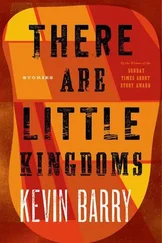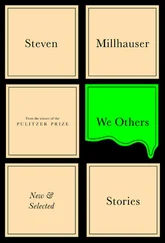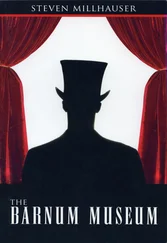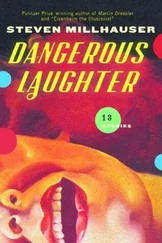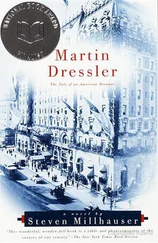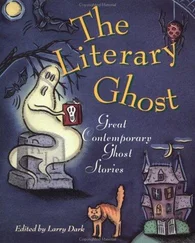Moorash had unusual difficulty with Phaedria’s Isle , taking it up and abandoning it all through the spring and summer, beginning work on several paintings that he never finished and evidently destroyed, and completing it only in November, with the remark that it was “botched work.” It is not hard to understand his struggle if we recall that the painting expresses in part a desire to be released from painting. But Phaedria is also a temptress who has a “loose lap” (II. vi. 14); the delights she offers, like those of Acrasia in the Bower of Bliss, are sexual. The precise state of Moorash’s feelings toward Sophia at the time of the painting are difficult to determine. His relation to her had become more problematic after the completion of Sophia Daydreaming; she refused to sit for him again and did not accompany William on his ten-day visit in January 1842, at the very time Elizabeth had begun to read The Faerie Queene aloud. She returned to Black Lake with William in the spring, and the mutual visits across the lake resumed, but an incident of the summer is perhaps indicative of what was to come. On a warm night in July the four friends decided to walk all around Black Lake. They proceeded in continually shifting pairs: Edmund-William and Sophia-Elizabeth, Edmund-Elizabeth and Sophia-William, Edmund-Sophia and William-Elizabeth. At one point when Edmund was walking with Sophia, she lost her footing on a loose stone and started to fall. Edmund seized her and prevented her fall; but she began struggling, wrenched herself free, and fell to the ground. William came running up and helped her to her feet. Elizabeth wiped dirt from her dress. When Elizabeth looked up, she saw Edmund standing unnaturally still with a wild look in his eye. A moment later he bent over, picked up a stone, and threw it violently into the lake. He stood watching the moonlit ripples before turning back to Sophia with an anxious inquiry about her fall. Sophia started walking and suddenly clung to William’s arm; the party returned to the Pinney cottage, for Sophia had twisted her ankle.
[19]
AUGUST NIGHT
1843
Oil on canvas, 40 5/8 × 34 1/4 in.
Immediately after completing Phaedria’s Isle in November 1842, Moorash began a series of sketches for a second Spenser-inspired painting called The Cave of Despair , which he worked at through the end of the year; neither the painting nor the sketches have survived. His difficulties continued. In February he traveled to Boston with Elizabeth — his first trip since the move to Saccanaw Falls in 1836. There he looked up old acquaintances whose letters had remained unanswered for seven years, stopped in at the Athenaeum, visited three or four studios, and dined with the Pinneys. Within a week he was restless and fretful, and traveled with Elizabeth to Hartford, where they spent the night with their parents and fled the next morning. They traveled south — Baltimore, Charleston, Richmond — and were back at Stone Hill Cottage on 2 March. A window had broken; snow lay drifted on the kitchen floor. By 4 March Moorash was back at work, on a painting that appears to have been an early version of one of the lost works of 1844. William and Sophia returned to Black Lake at the end of April. Edmund sketched outdoors, took long walks, stayed up all night, and slept till noon. On 31 July he tripped in the barn and cut his forehead. On 2 August, as he and Elizabeth were leaving the Pinney cottage after midnight, he broke away from Elizabeth and returned to the front door, where he said something to Sophia that caused her to step back with a hand raised to her throat. Precisely what he said is unclear, but it appears to have been a declaration of love. The next day he shut himself in his upstairs studio — he had been working in the barn — and began August Night , which he completed in two weeks.
It is a remarkable painting, which has retained its power to shock. The startling sky, which appears to crack open and release a violent radiance, is painted with a new freedom of brushstroke, a stroke that makes no attempt to conceal itself, as if the paint and the night it represents are one and the same. The entire picture pulses with a strange, intoxicating energy, as if the hills, the wood, and the swirling night-sky have been swept up into the all-annihilating brilliance of the unseen moon. The picture has been called a celebration, but it evades easy description; it affects the viewer as a release of energy, with the doubleness implied by release: liberation and destruction.
Elizabeth records in her Journal that on the morning of 18 August Edmund called down to her in a “strange, agitated voice.” When she entered his workroom she saw two things: the painting, which she calls “a whirlwind,” and Edmund, lying on his back on the floor. She cried out and ran to him, but he smiled up at her and said that he had been studying his picture at a new angle. He thought it was done — what did she think? Elizabeth looked at August Night “through tears of terror and joy.” She never got over the sense that the violent painting had struck him dead.
[20]
ANGER
1843
Oil on canvas, 26 1/4 × 20 1/2 in.
According to Elizabeth’s Journal, Moorash rose from the floor, dusted himself off, and immediately began work on another painting, which he completed in the last week of September. Anger is unusual in Moorash’s oeuvre both for its explicit statement of mood and for its treatment of the small foreground figure: she is drawn in firm outline and heavily stylized — white dress, yellow hair — so that she almost resembles a child’s drawing of an angel. She stands with her back to the viewer and is looking out over a red lake. The landscape is sketchy and generalized, suggested in a few bold and flowing lines — shore, lake, hills, sky — and is painted entirely in shades of red, built up with layers of glazes. The red world appears to be streaming out of the little foreground figure, like rays around a sun.
Havemeyer is surely mistaken to attribute the anger of the title to Moorash himself. The evidence of Elizabeth’s Journal is decisively against such an interpretation. Moorash reproached himself bitterly for offending Sophia by his words, by his very existence — how dare he sully her purity with his filth? Immediately upon beginning the painting he sent Elizabeth across Black Lake to effect a reconciliation, which she appears to have done; as if nothing had happened, the nightly visits were resumed, even as Moorash painted in red.
[21]
TOTENTANZ
1843?–45
Oil on canvas, 44 1/4 × 52 1/8 in.
The dating of Moorash’s final paintings must remain uncertain, for two reasons. First, in the last months of 1843 he began to make a regular habit of putting aside a painting-in-progress and returning to it weeks or months later after having begun a new painting that also would be put aside after an intense bout of work; there is evidence from Elizabeth’s Journal that during a single summer month in 1844 he worked on four different paintings (only two of which have survived). Second, the Journal itself becomes spottier in the final years, often omitting whole weeks at a time as Elizabeth becomes increasingly incapacitated by severe headaches and a variety of obscure illnesses that prevent her from making detailed entries. With the possible exception of the final, fatal painting, we have no evidence that any of the last works is complete.
The first definite mention of the Totentanz (Dance of Death) occurs in Elizabeth’s Journal on 23 June 1844: “A gray day. Edmund has returned to his Death Dance — says he has it now.” This obscure entry suggests that Moorash was returning to a painting begun earlier, and a number of entries in the fall of 1843 (see Havemeyer for a full account) make it likely that he had begun or was thinking of beginning a painting with a death theme in late October. We last hear of the Totentanz in the spring of 1845: “Edmund has put aside his Death Dancers [sic] again” (2 May 1845). Whether he took it up again before his death in the summer of 1846 is a matter of speculation; Havemeyer finds some evidence for two periods of work, whereas Sterndale argues that he never returned to it after beginning the final series of portraits.
Читать дальше



